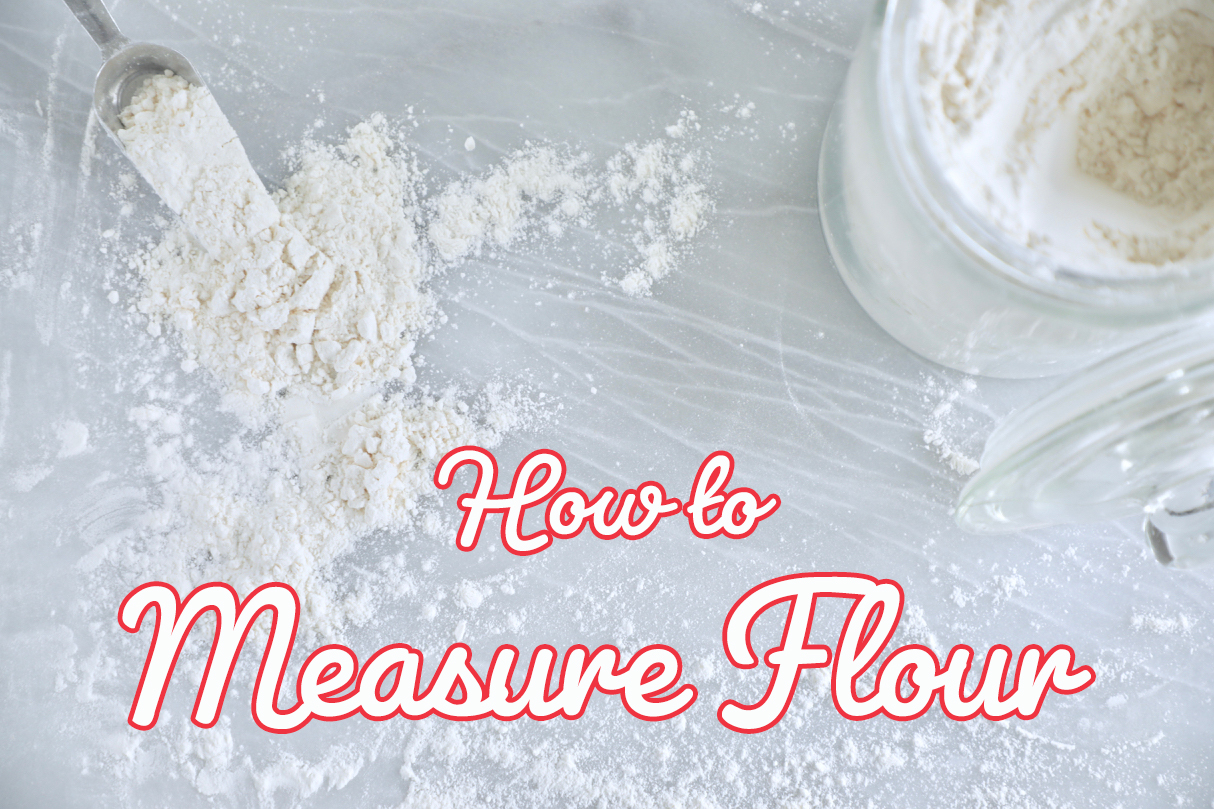
This post may contain affiliate links. Please see my full disclosure for details.
Hi Bold Bakers!
As all of you know, delicious and high-quality baked goods are built from the ground up! From the actual ingredients you use to the tools and techniques you practice, Bold Baking is all about striking that balance between taste and technique.
To truly learn how to bake, you should be learning the basics. My Bold Baking Basics series was created for that reason and features things like how to make your own Homemade Butter or Homemade Brown Sugar. But, I think it’s important to go even deeper — even more basic. Let’s talk How to Measure Flour.
What kind of measuring cups do you use to measure flour?
To start off, you want to make sure you are using the right tools for the job. A drinking cup, a coffee cup, and things of that sort are not actually a proper way to measure a cup of flour — or any ingredient for that matter.
Treat yourself (or the baker in your life) to a nice set of measuring cups. Here are the cups I use for Bigger Bolder Baking.
How to Accurately Measure Flour
Now that you’re all set with the correct kind of measuring cup, you’ll want to address the way you scoop your flour. There are two ways to skin this cat, you’re either a spooner or a scooper.
The spooners fill their cup up spoonful by spoonful and they level off with a knife. If you spoon this will give you a little more air in your cup. This means 1 cup could be somewhere in and around (4 1/2oz/128g).
However, I’m a scooper, so for all of my recipes, I dunk my cup into my jar of flour and level off. This method means that my 1 cup of flour will weigh (5oz/142g). So if you following my recipes just note that I like to scoop and maybe my cup is a little fuller than other websites or blogs. The good thing is that my weight is consistent across all my recipes so along as you follow them accurately, your recipes will work out perfectly.
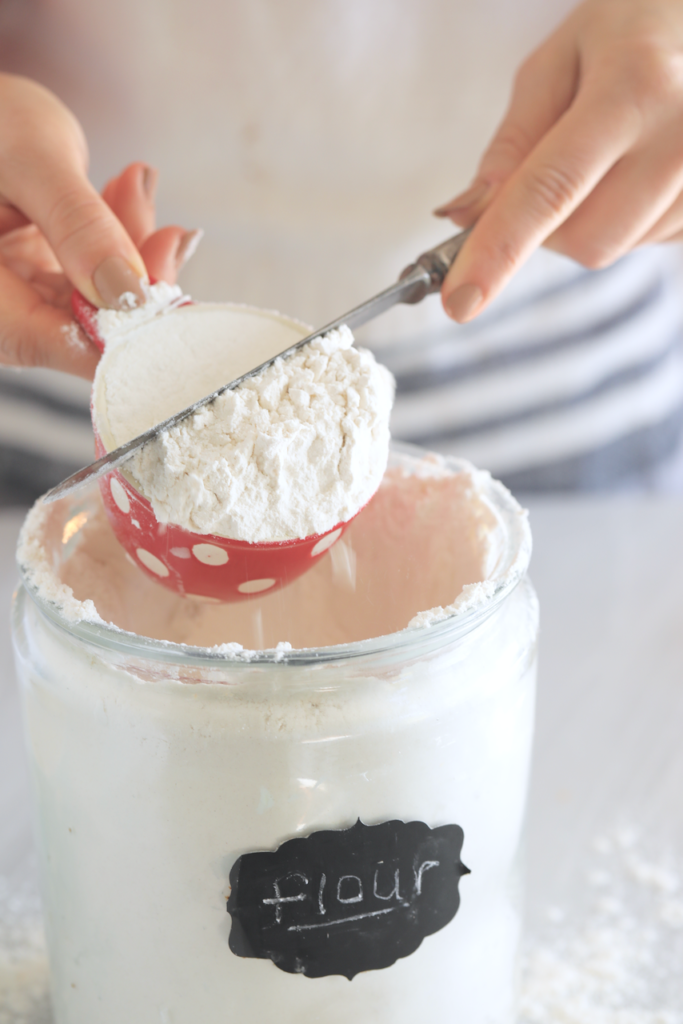
Do I have to level off my flour?
Once you’ve scooped enough flour into your cup, you absolutely want to make sure to level it off. I always do this. I like to level off my measuring cups with the blunt edge of a butter knife.
To do this, I swiftly run the knife’s edge over the cup allowing the excess to be swiped away. If my cup isn’t full after I level, I add a bit more then level it off again. This, in combination with spooning the flour into the cup, ensures there is never too much flour and never too little, and my measurement is always just right!
Not All Flour Is Created Equal
The last thing to know is that just like brown and white sugars have different weights, different kinds of flour vary in weight.
From whole wheat to white to rye, each one of these grains is ground differently, and while they all end up to be a fine powder they can still vary in the weight per cup. To get the MOST accurate measurement of all, I suggest using a scale to get the grams and ounces measurements. Baking is about precision and a scale will get you the most exact weight. You can take a look at my handy Weight Conversion Chart for more information.
I also know this is a kitchen tool not everyone has, but I suggest making the investment if you love to bake. I have had an OXO Digital Scale for many years and it was well worth it.
Get More Basics
And don’t forget to follow Bigger Bolder Baking on Pinterest!
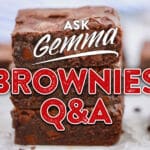
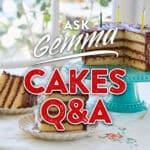
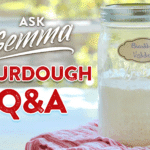

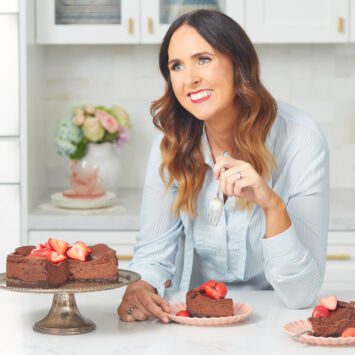

If you can afford to bake, you can afford a scale. End of story.
I was taught never to scoop with the measuring cup. It packs the flour into the cup and you also risk introducing unwanted germs into your flour storage container. I have a very old scoop that I use to fill my measuring cup. Also, do you ever sift?
When I measure I scoop as well, but I really fluff the flour up in the container before I dip. Does this get you closer to exact measurements? Another question, how do these people who just guess and don’t measure get a succsessful recipe, it boggles my mind.
I was given a 3lb. bag of Artisan bread flour. I get it that is for bread, I guess. Would you use it in place of All-purpose flour? What else can it be used for?
Hi Gemma!
Wanted to know if your 1cup= 200g or 8 ounces. I know that 1 cup of flour, white sugar, brown sugar will all have different weights and its a measure of volume after all. But still wanted to know if yours and mine are similar.
Hi Gemma, if in the recipe it requires Cake flour but I only have All Purpose Flour. Can you share the ratio, please? Thank you
Love all your recipes. Am just a novice in baking & your recipes are easy to follow. Thanks so much. Yes, I do scoop flour from the bag & level off with knife. Taught that by my late mum.
I’ve been baking for almost 30 years now, and I’ve always been a “spooner”. I read a long time ago that you’re never supposed to be a scooper, as you don’t get an accurate measurement that way. But then again, most blogs/tv shows/websites always say that weighing ingredients is the best, and most preferred way, of measuring ingredients. I have a digital scale, but have yet not been able to consistently use that particular tool. It’s funny that you’re addressing this topic now, as I’ve always wanted to ask your opinion on the subject. I see so many “scoopers” and… Read more »
I held my measuring cup under the spout of the flour hopper Hoosier cabinet and twirled the handle to get the flour into the cup. Then I leveled the cup with a knife to measure my flour. I was 8 yrs. old and in 4-H. I had been taught to spoon my flour in from the cannister but we didn’t have a flour cannister. I still shift flour for bread because I get a better crumb.
I read some time ago that to measure flour, fluff it first with a spoon, spoon flour into your measuring cup, & thento level it. This is to get an accurate measurement. I just leave a spoon in my flour canister.
Also, what is the web site that you refer to for buying baking items?
Thank you